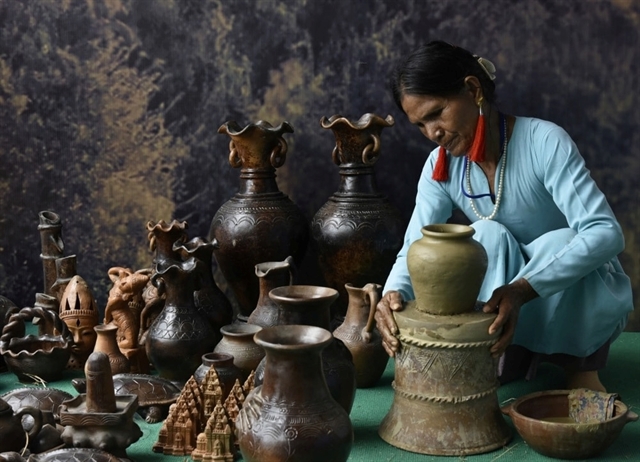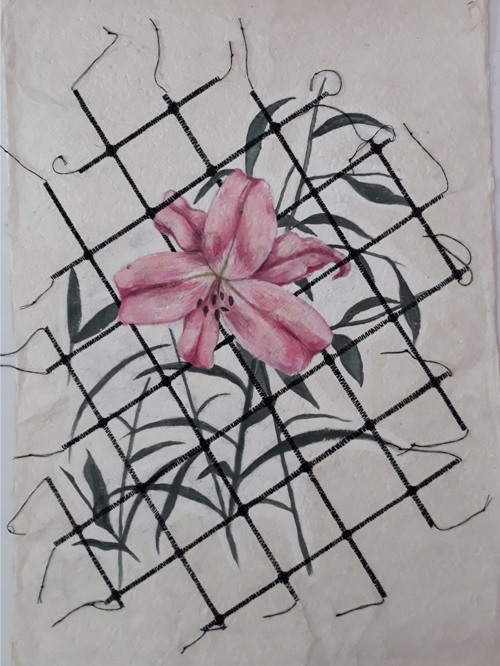 Life & Style
Life & Style

In Marianne Smolska’s new series entitled Phù Du (Ephemeral), delicate monochrome motifs of skulls, wilted flowers, brambles, roots and chrysalises intertwine with embroidery on handmade Lao and Vietnamese paper.
 |
| Fence of the neighbour, one of the artworks on display. |
HÀ NỘI — In Marianne Smolska’s new series entitled Phù Du (Ephemeral), delicate monochrome motifs of skulls, wilted flowers, brambles, roots and chrysalises intertwine with embroidery on handmade Lao and Vietnamese paper.
Her solo exhibition is ongoing at the Đông Phong Gallery at 3 Lý Đạo Thành Street, Hà Nội.
Inspired by David Bowie’s death, this ballpoint series is a reflection on the frailness of life, the passing of time, the inescapable aging of the body and the wounds of bereavement that have to be tended, nursed and even stitched up.
The bare threads, fragile lifelines, webs or seams, sometimes caught in brambles, seem to seek to capture a pattern before it disappears. And when they are simply stretched or suspended, these strands seem to weave links between worlds—the world in which the artist lives, Việt Nam, and the one from which she comes, France, but also between the word here below and the one beyond.
The delicate illustrations embroidered by Smolska not only revive French and Dutch 17th century “Vanitas”, allegorical works of art in the form of still lifes about death and the futility of human passions, but also elements of Vietnamese culture through the use of organic paper and celestial motifs.
“In her raw, nearly flayed embroideries, Marianne Smolska does not seek to conceal the injury. She re-stitches it; she re-clothes the dead, decking them with black, blue and blood red flowers and embroideries, and heals the wounds,” remarked art critic Isabelle Capron.
At the heart of this hypersensitive work are sewing baskets, thread and needles. The baskets belonged to her grandmother and mother, who recently passed away. It can seem as though the artist didn’t want to lose the thread—by holding onto it, she prolongs the never-ending chain of women’s work and prevents the dead from fading into oblivion.
“Organic, frail, poetic, but also stormy, these embroideries on paper are seams, stitches and even erasures, she says; as though the artist wanted to retrieve from death that which it had taken from her and sublime grief. Through this work Marianne Smolska brings us to touch grace,” Capron said.
Smolska was born in 1969 in France. She has studied the social sciences and anthropology. In 1994, she left anthropology and turned full time to painting and graphic arts. At that time, she travelled to Naples, Italy, and settled in a studio.
In 2011, she travelled to Việt Nam for the first time and in 2013, she returned to the country and decided to live and work in Hà Nội.
The exhibition will run until June 23. — VNS




